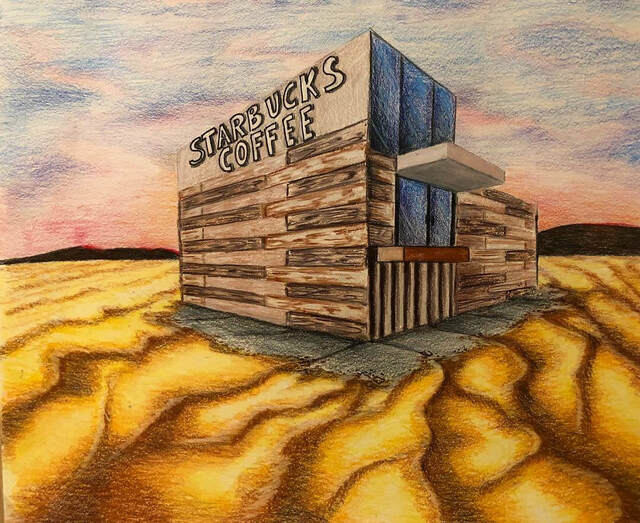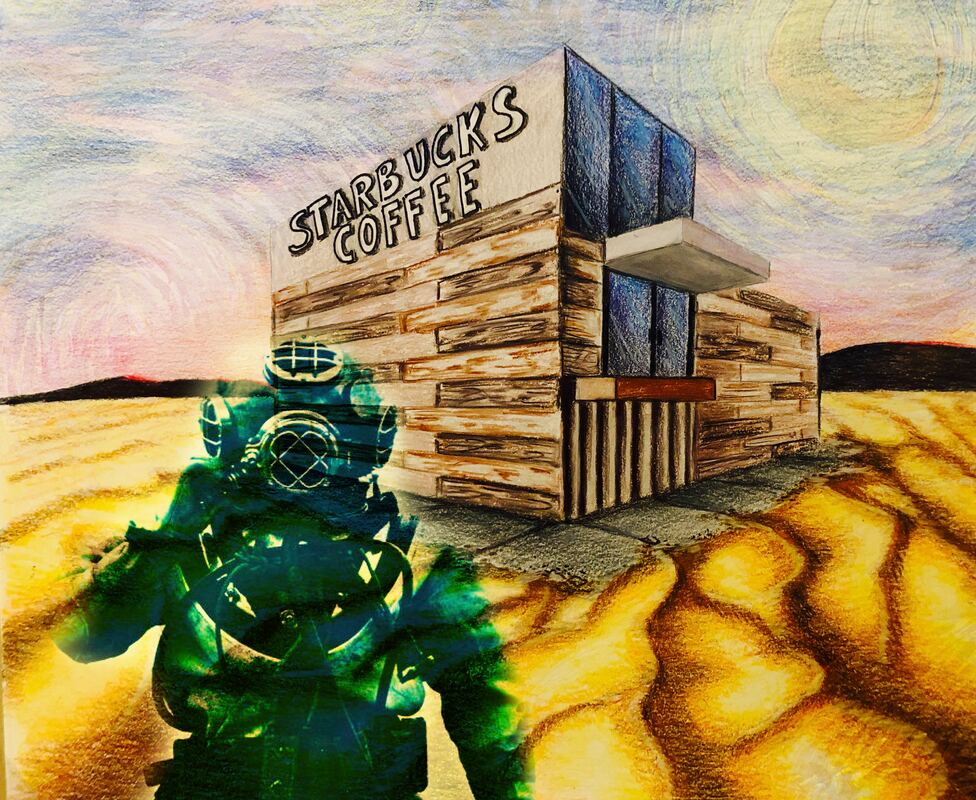LESSON PLANNING NEVER STOPS! My sample for my upcoming Perspective unit My sample for my upcoming Perspective unit Sorry to tell you this but, if you're not still creating new content for your courses, you're doing a disservice to your students. This is my opinion, you might disagree, such is life. Yes we have projects that have amazing outcomes and students may have mastered technical skills through the lesson, and it is tried and true. You may not want to deviate. You may not want to touch that lesson, for fear of the slightest change altering the outcomes. If you want to elevate yourself as an educator however, are you reflecting on your work? Is there a new artist you can incorporate into this lesson? Is there a current exhibition that relates to this project's concept/technique/style or material? Is there an extension to this project? Is there an activity you can try for a few minutes prior to starting the classwork on the project? Are there different management techniques you can try, or a way to arrange the room more effectively? Are there different questions to be asked? If you're not asking yourself these reflective questions, you may be doing a disservice to your students. You may also run the risk of getting bored with your own projects. If you're not that personality type, I'm almost jealous because I can't seem to leave well-enough alone for long enough. Which leads me to the dreaded "Perspective Unit". I really despise perspective lessons. One point, two point...any point, I don't like teaching it. I don't like rulers so much, or the confines of fitting my ideas into a template such as perspective is essentially a template for creating space/depth on a 2D surface. Yes, the concept is important to teach, yes I need to bring up Renaissance art and boring dead white male artists who propelled this concept further, yes I need my students to understand how to make something 3D on paper. So each year, I struggle with what I'm going to do with my perspective unit. The two-point street corner. A surreal twist- make it a board game, make it in outer space, make it upside down. I tried drawing a corner of our school hallway from observation then taking that drawing and collaging it into another surreal landscape to talk about displacement. Student outcomes were mediocre at best, and I was bored, and frustrated. I still can't pronounce "orthogonal". I was tired of using the basic surreal artists, Dali, Magritte, etc. as the basis for this work too. This year, I was determined to do something with a contemporary twist, so I sat down and looked at one of my favorite artist's work, Scott Listfield (https://www.astronautdinosaur.com). His paintings infuse surrealism displacement concepts with Pop art. There is a strong sense of background, middle ground, foreground and scale. He uses a reoccurring figure of an astronaut, to tell an on going story of what one might find in the future when we come back to Earth. Abandoned stores, left over billboards, nature taking over, dinosaurs coming back to inhabit the Earth, it's all very engaging stuff! In several paintings there is the use of two point perspective within a building/structure. Using this artist, I started to construct my new lesson. Students will be creating a landscape with at least 1 building in two-point perspective. Their building should reflect a modern day, recognizable store/restaurant etc. Their background landscape should be a place where this store wouldn't normally exist. They'll draw this out and render it with colored pencil. To me, this was still a basic two point perspective project. So to take it a step further, and reinforce this concept of scale/foreground etc seen in Listfield's work, I am going to have students take a photo of an action figure, or use a found image from the internet of a dinosaur, animal, figure etc. And using an App of their choice, they will create a digital illustration combining together this image with their perspective drawing. For my sample, I used the app called "Over". It allowed me to overlay an image of an old scuba diver, with transparent effects, and mask out the rest of the image so the drawing was more visible. I went ahead and also incorporated a piece of Van Gogh's "Starry Night" into the sky. Pixlr is free, may be effective but you can't mask out the object. MediBang paint on the iPad may also work. What will be cool is that students have their original perspective drawing, which is a complete project in and of itself, but they also have this digital component that can exist and they can be as creative as they want with out disrupting their original image. I also want them to use this as an opportunity to see that once they create an artwork, that doesn't have to be the end of its life. It can exist in many other forms and become the start of something new. Getting into the habit of continually transforming an artwork and finding new ways to alter it to become something new is a skill that my students need to be successful contemporary artists themselves. So, I challenge you to tackle that project that maybe you dread teaching or are bored of, and find a way to make it work for you and for your students. I am not sure how this is going to go, but I can tell you I am feeling way more enthusiastic about teaching it, which can only mean that it should be a better experience for my students. I tried my best to make a solid teacher sample, so they can be inspired to try the techniques too. Keep putting the work in, keep changing things up! Yes it's a little more work (my friday night....) but it keeps me energetic about what I'm doing in the art room, where I spend most of my time, so it's worth it. Have fun! XO, Danielle PS: Thanks to other art teacher friends, here are some other artist you can look to for a more contemporary approach to perspective: Cinta Vidal: IG @cinta_vidal Patrick Hughes: IG @patrickhughesartist Scott Listfield: IG @scottlistfield Photography, forced perspective: Wire Hon IG @wirehon Mark Hogancamp, "Marwencol" Spherical panoramas by Randy Scott Slavin "Alternate Perspectives" IG @randyscottslavin Pen/Pencil, concept art, futuristic cities with immense detail: Jae Cheol Park (aka Paperblue) IG @paperbluenet Photorealistic landscape Painter: Nathan Walsh IG @nathanwalshartist Photorealistic landscape: Jessica Hess IG @jessicahessart
0 Comments
Leave a Reply. |
Danielle LivotiArtist. Art Educator. This is what we're doing in art room 144. Archives
February 2021
Categories |


 RSS Feed
RSS Feed
